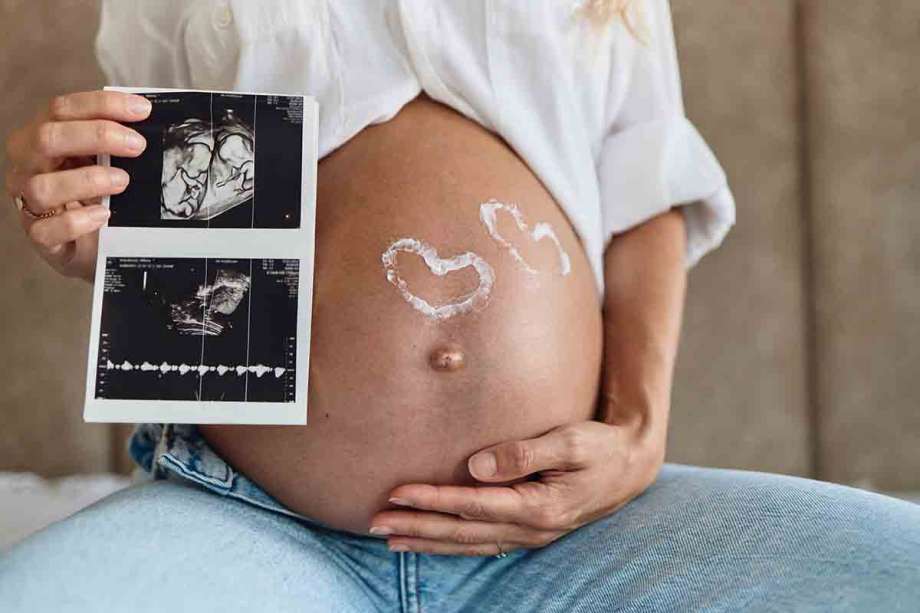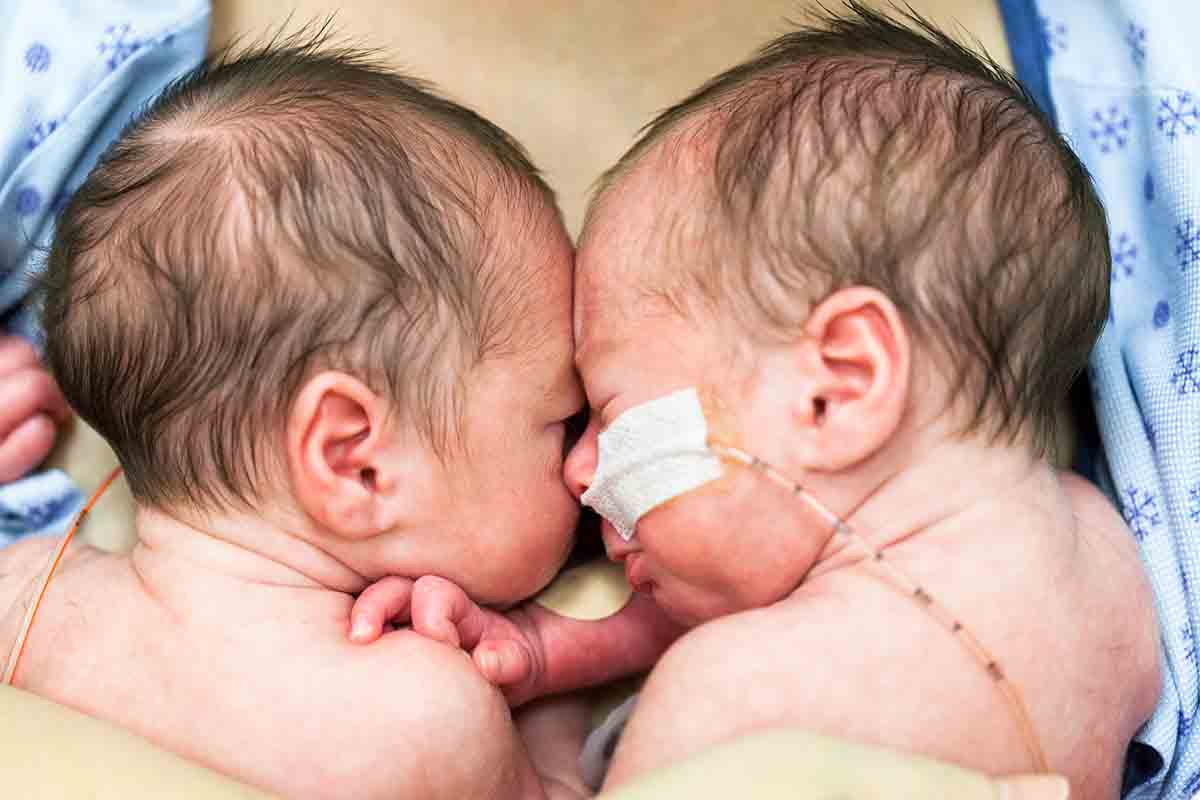Understanding Mono Di Twins: Causes, Diagnosis, Risks

All twin pregnancies are not the same.
Your Sweet Valley High days sadly didn’t give you all the info you ever needed to know about identical twins. Or, so you thought. Just because the Wakefield girls were duplicate copies of each other doesn’t mean all twins look the same.
Now that you’re the one who is thinking about having a baby or you’re already there, you want to know absolutely everything you can about the possibility of having twins during pregnancy.
Learn more about the different types of twins starting with mono di monochorionic diamniotic twins.
Related: 8 Factors That Increase Your Chances of Having Twins
What Are Monochorionic Diamniotic (Mono Di) Twins?
Many people believe there are only two types of twins: Identical and fraternal. Identical twins look, well, identical. And, fraternal twins don’t. But the twinning goes well beyond your kiddos’ hair color, eye color, and face shape.
Monozygotic twins
Monozygotic twins are identical. These twins come from the same egg and sperm.
Monozygotic twins can share the same chorion, or outer membrane around the fetus. The chorion connects your baby to the placenta. This means if your twins share a chorion, they also share a placenta.
Dizygotic twins
Dizygotic twins are fraternal. These twins come from two separate pairs of egg and sperm. Dizygotic twins are non-identical.
Monochorionic diamniotic twins
Monochorionic diamniotic twins are identical and share a placenta (monochorionic) but each twin has their own inner sac (diamniotic). Mono di twins account for only around account for 1% of pregnancies and for 20% of twin pregnancies.
Other commonly used names for monochorionic diamniotic twins are mono diamniotic twins, mono di twins, and MCDA twins.
Mono Di vs. Mono Mono vs. Di Di Twins?
In addition to monochorionic diamniotic twin pregnancies. There are also mono mono twins and di di twins. To understand what these terms mean think about the meanings of mono (one) and di (two).
Mono mono twins (monochorionic monoamniotic) are identical twins – monozygotic – who share one chorion and one amniotic sac (monoamniotic).
Di di twins (dichorionic diamniotic) are fraternal twins – monozygotic and dizygotic – who don’t share either a chorion or an amniotic sac. Dichorionic twins each have their own placenta and diamniotic twins each have their own amniotic sac.
What Causes Mono Di Twins?
To understand what causes mono di twins you need to start at the beginning—meaning conception. MCDA twins come from one fertilized egg. The egg splits, creating two genetically identical embryos.
Mono di twins are rare. According to the University of Michigan, three to four out of 1,000 pregnancies result in MCDA twins. While there is no known “cause,” in vitro fertilization (or IVF) is the only known risk factor.
A 2017 study of 8.860 IVF pregnancies between 2011 and 2016 found that 81 MCDA twins resulted from fresh embryo transfer cycles and 145 sets of identical mono di twins resulted from frozen embryo cycles. The rate of monochorionic diamniotic twins was also higher for women ages 35 and over.
How Are Mono Di Twin Pregnancies Detected and Diagnosed?
Carrying mono di twins is not something that a pregnancy test would tell you or that you would somehow feel or know on your own. Your OB-GYN or ART specialist can diagnose mono di twins using an ultrasound scan. Most mono di or MCDA twins are found during a normal routine 14-week ultrasound, according to Children’s Wisconsin Hospital.
Diagnosis can only happen after the placenta and amniotic sac are visible. Along with visualizing one placenta on the ultrasound, the doctor will see two separate amniotic sacs in a mono di pregnancy. If two separate sacs are present, the doctor can measure the amount of amniotic fluid in each one.
Increased Risks for Mono Di Twin Pregnancies?

Multiple pregnancies such as twin pregnancies come with increased risks. Any twin gestation carries an increased risk of prematurity. This higher risk makes it important to see a maternal-fetal medicine specialist.
Pregnancy Conditions and Risks
Stanford Medicine Children’s Health reports that over three out of every five higher-order, multiple pregnancies result in preterm birth before 37 weeks gestation. Other potential risks of a multiple pregnancy include gestational high blood pressure, preeclampsia, anemia, birth defects, miscarriage, cord entanglement, low birth weight, and increased chance of requiring a cesarean birth (C-section section.
Intrauterine Growth Restriction and Selective Intrauterine Growth Restriction
Twin pregnancies also mean there is less room for each fetus to grow in utero. This can lead to intrauterine growth restriction (or IUGR). IUGR may affect only one of the fetuses in a mono di pregnancy.
Known as selective intrauterine growth restriction (sIUGR), this condition may result in one baby being significantly smaller than the other at birth. According to the University of Michigan, sIUGR affects 12 to 25 percent of monochorionic twins. Unequal placental sharing is the likely cause behind most cases of selective IUGR in mono twins. Umbilical cord insertion abnormalities may also cause sIUGR.
Twin-to-twin Transfusion Syndrome (TTTS)
Having a mono di twin pregnancy can cause abnormalities in the amount of amniotic fluid, and twin-to-twin transfusion syndrome (or TTTS). TTTS can cause one twin to give away more blood and nutrition than they receive, potentially leading to deficiencies and organ failure.
The University of Michigan notes that 10 to 15 percent of mono pregnancies result in TTTS. This higher incidence of TTTS is often due to abnormal connections in the placental blood flow and restricted fetal growth. In TTTS, one twin sends excess blood to the other. The twin recipient of the blood supply will develop polyhydramnios, or too much amniotic fluid or oligohydramnios.
Twin Anemia Polycythemia Syndrome (TAPS)
Twin anemia polycythemia syndrome or TAPS is another possible risk to the twins of a mono di pregnancy. If this happens, one twin can develop a low blood count and the other has an abnormally high blood count.
Twin Reversed Arterial Perfusion Sequence (TRAP)
Twin reversed arterial perfusion sequence (TRAP) is a serious condition that can result from sharing a placenta. TRAP occurs when one fetus does not have a normal or functional cardiac system. Instead of the fetus pumping its own blood, the twin’s heart does all of the work. This dramatically increases the strain on the pumping twin’s heart.
The Children’s Hospital of Philadelphia notes that in 50 to 75 percent of cases of untreated TRAP, the pumping twin dies of heart failure. Surgery, such as radiofrequency ablation (or RFA) can stop the blood flow and increase the survival rate.
How Should You Manage A Mono Di Twin Pregnancy?
Regular medical care is crucial for any pregnancy. But when you are having mono di twins, care from a maternal-fetal medicine specialist is essential. The OBGYN will need to monitor the growth and health of the twins. Brigham and Women’s Hospital notes that the recommended timing of visits and care for mono di twin pregnancies is every four weeks after the first prenatal visit, every two weeks after 16 weeks gestation, and every week until delivery after 36 weeks gestation.
Instead of just one ultrasound during the second trimester, mono di pregnancies may require imaging follow-ups to assess amniotic fluid levels every two weeks and every four weeks to assess growth, after 16 weeks. Additional high-risk factors may make it necessary to have ultrasounds more often. If mono di is suspected, you may need ultrasound imaging in your first trimester.
Along with regular care and imaging, some mono di twin pregnancies require treatment or intervention before birth. One of the common procedures to treat TTTS with a severe hemoglobin difference is fetoscopic laser coagulation of the anastomoses, according to a literature review published in the American Journal of Obstetrics and Gynecology MFM. This procedure stops the blood transfer between the fetuses.
To learn more about twin pregnancies and preparing for multiples see Twins: Preparing for Twin Births.

